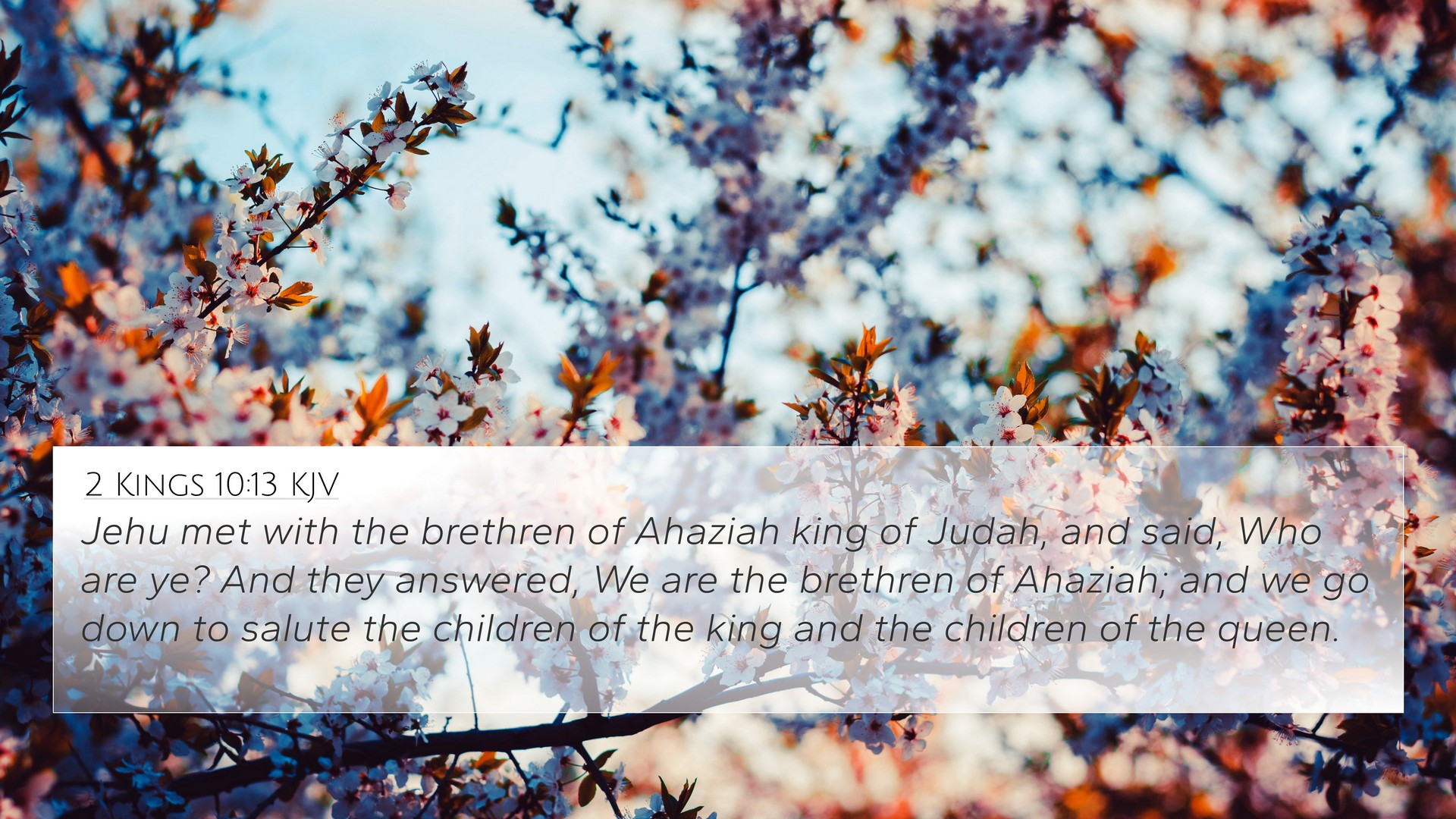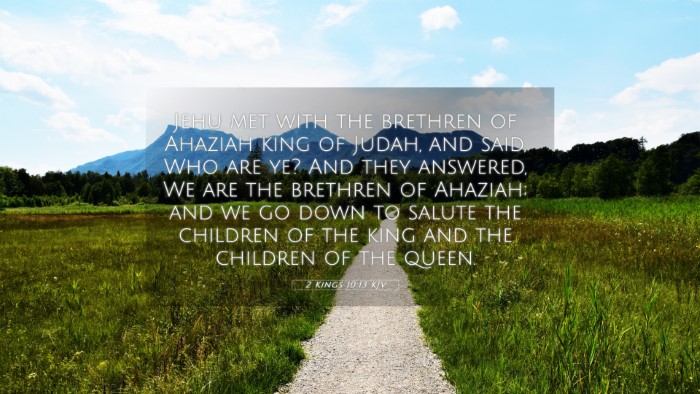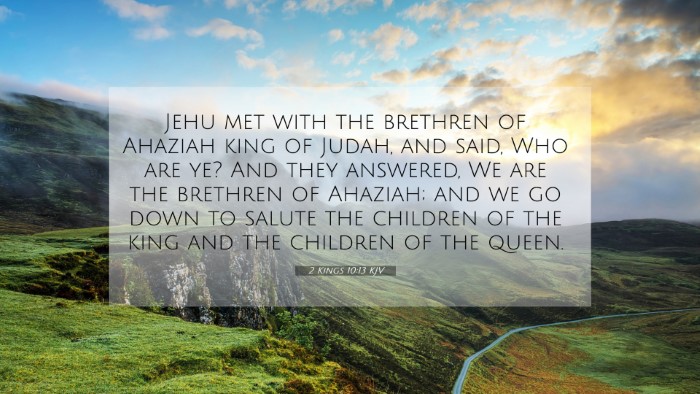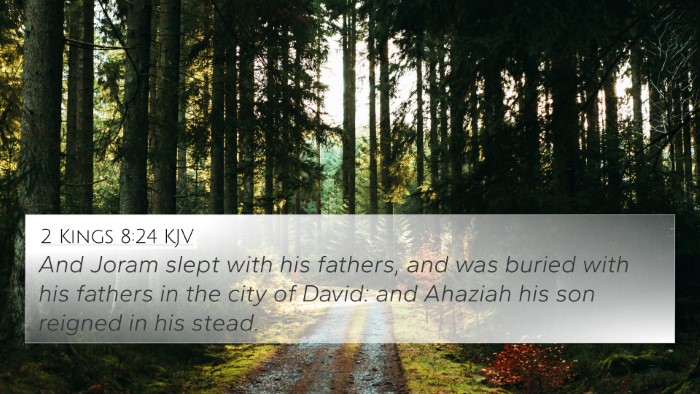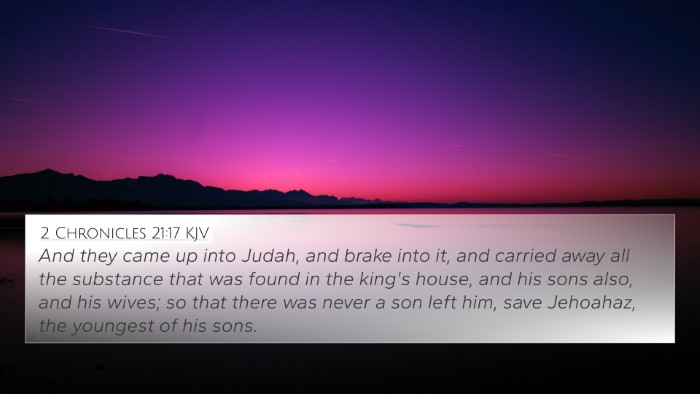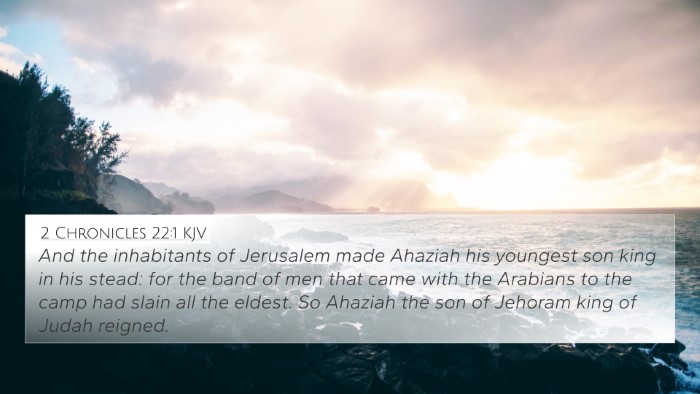Understanding 2 Kings 10:13
This verse states: "Jehu met with the brethren of Ahaziah king of Judah, and said, Who are ye? And they answered, We are the brethren of Ahaziah; and we go down to salute the children of the king and the children of the queen." It marks a moment rich in political and spiritual implications as Jehu continues his campaign to remove the house of Ahab and the worship of Baal from Israel.
Context and Background
The context of 2 Kings 10 involves Jehu's zealous reforms and purges of idol worship. This particular verse highlights Jehu's interaction with the kin of Ahaziah, which reflects both the tension between different royal houses and the larger narrative regarding divine judgment and restoration of true worship.
Insights from Public Domain Commentaries
- Matthew Henry: Henry emphasizes Jehu's fulfillment of God's command to destroy the house of Ahab. He notes the irony in Jehu’s question to Ahaziah's brethren, pointing out the dangers of association with those who succumb to idolatry.
- Albert Barnes: Barnes elaborates on the significance of Jehu's encounter, suggesting it underscores Jehu's ruthlessness and the swift judgment against those who continued in the ways of Baal worship. He also makes connections to the earlier prophetic warnings about the fate of Ahab’s lineage.
- Adam Clarke: Clarke provides a detailed explanation regarding the identity of Ahaziah’s brethren and their mission to visit the king. He points out the precariousness of their situation, noting that while they intended goodwill, they unknowingly walked into a trap set by Jehu.
Thematic Connections
This verse serves as a pivotal point in understanding the broader themes found in the Old Testament concerning the judgment of God upon Israel and the significance of loyalty to Yahweh versus allegiance to earthly kingdoms. The actions of Jehu are not just political but deeply spiritual, showcasing the ongoing conflict between idolatry and true worship.
Bible Verse Cross-References
Several verses relate thematically and contextually to 2 Kings 10:13, enhancing our understanding of its implications:
- 1 Kings 21:21: God's prophecy concerning the doom of Ahab's house.
- 2 Kings 9:6-7: Jehu's anointing and appointment as king to eradicate Baal worship.
- 2 Chronicles 22:8-9: Details about Ahaziah’s fate and the intertwining of the royal families.
- 1 Kings 18:20-40: The contest between Elijah and the prophets of Baal, setting a precedent for Jehu's actions.
- Hosea 1:4: God's command to name Jehu as the agent of judgment against the house of Ahab.
- Jeremiah 22:18-19: The predicted calamity upon kings who turn away from God's ways.
- Proverbs 1:10-15: Warnings against associating with those who seek to do evil, echoing Jehu's question.
- Isaiah 8:12-13: Exhortation to fear God rather than earthly rulers, similar to Jehu's focus.
- Micah 6:16: Condemnation of following the ways of the house of Ahab.
- Revelation 2:14: A New Testament reference that highlights the dangers of idolatry.
Applying the Insights
Understanding 2 Kings 10:13 through these commentaries and cross-references can deepen our comprehension of the scriptural narrative on faith, judgment, and divine purpose. Engaging with the broader connections between Bible verses enables believers to appreciate the continuous themes and lessons throughout Scripture.
Cross-Referencing Bible Study Methods
Utilizing tools for Bible cross-referencing, such as a Bible concordance or cross-reference Bible study guides, can help illuminate these connections further. Here are some effective methods:
- Utilize a concordance: Look up keywords like "Ahaziah" or "Jehu" to find related verses.
- Topical studies: Consider groupings based on themes such as judgment or royal lineage.
- Comparative studies: Examine parallels between stories and teachings across both Testaments.
Conclusion
The exploration of 2 Kings 10:13 reveals not only a pivotal moment in Israel's history but also serves as a reminder of God's overarching plan for His people amidst human complexities. The connections unearthed through cross-referencing enhance our understanding of the rich tapestry that is the Biblical narrative, illustrating how individual verses are woven together into a divine message of hope, judgment, and ultimately, redemption.
